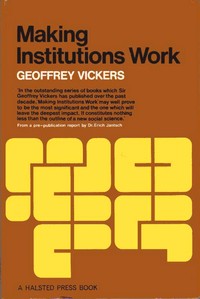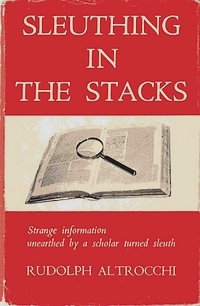Neglect is a relative term, particularly when you look at writers from a global perspective. Charmian Clift is a good example. In the U.S., she gained slight notice for her two books about life on a Greek island back in the 1950s, disappeared after that, and is utterly unknown today. In Australia, she and her husband, the novelist George Johnston are major figures in the country’s cultural history, and adjectives such as myth, legend and phenomenon are attached to her story, and this collection of her essays can be found on the Australian Society of Authors’ list of the 200 Greatest Works of Australian Literature.

Had Clift been American and People magazine been in business during her life, she would have been a staple of the supermarket check-out aisles. Beautiful, smart, and talented, she was already gaining considerable publicity and attention before she met and married Johnston, who was one of the most dashing of Australia’s war correspondents and a rising figure in the country’s postwar literary scene. Their romance scandalized some, as Johnston was married and eleven years older. They collaborated on a novel set in Tibet, The High Valley (1947), that won the Sydney Morning Herald award as the best Australia novel–the first of three they would write together. “I was the journalist who supplied the substance,” Johnston later said, “She was the artist who supplied the burnish.” A vocal opponent of the government of Prime Minister Robert Menzies, Johnston left Australia in 1950 to take a job as a correspondent in London, bringing along Clift and their two young children.
After a few years in chilly England, chafing against the constraints of journalism, Johnston quit his job as correspondent and the family moved to Greece in 1954, where they soon set up house on the small island of Hydra. Their dream was to enjoy the warm weather, cheap living, and freedom from distractions and concentrate on writing. And at first it worked. George wrote several novels, as well as a number of thrillers under the name of “Shane Martin” (the names of their first two children), and Charmian wrote two books about life on the island: Mermaid Singing (1956) and Peel Me a Lotus (1959).
But although Hydra was a small and largely forgotten island, it had attracted a fair number of expatriates, and some of them, like Johnston and Clift, were hard drinkers and partiers. They collected in the back room of a small grocery store run by the Katsikas brothers, and soon the parties were starting right around noon and running all night. Hydra’s reputation as a haven for bohemians spread, attracting, among others, the young Canadian poet, Leonard Cohen, who bought a house there in 1960. Photographer James Burke visited the island and made the expat scene the subject of a photo essay, with Clift and Johnston prominently featured. Both passionate people, Johnston and Clift gave vent to their feelings when drinking, and became known for their bitter fights. Cohen would later write of the couple that they “drank more than other people, they wrote more, they got sick more, they got well more, they cursed more, they blessed more, and they helped a great deal more. They were an inspiration.”

And, despite the warmth of the Greek summers, life in an unheated house took its toll on Johnston, who never enjoyed the most robust constitution. He contracted tuberculosis, and spent long months incapacitated, which cut into his time for writing and hence the family’s income. Finally, he borrowed some money and flew back to Australia in 1964, and Clift followed him soon after with their children (now three with the addition of Jason, born on Hydra).
Johnston’s health continued to decline, although he was able to complete his autobiographical novel, My Brother Jack (1965), now considered an Australian classic. But Clift had to take over as the main breadwinner, and, by happy coincidence, was offered the job of writing a weekly column in the women’s section of the Melbourne Herald and Sydney Morning Herald. The papers published a large ad announcing Clift’s engagement alongside her first column featuring her photo and mentioning the couple’s recent return from Greece.
Clift’s first piece (titled “Coming Home” but changed by the editors to “Has the Old Place Really Changed?”) reflected on the contrasts between the landscapes, urban environments, and people of Greece and Australia. She remarked how often her old acquaintances would tell her, “The old place has changed quite a bit since you saw it last.” But, in fact, she noted, many of the characteristics of Australian life — characteristics that had led her and Johnston to leave ten years earlier — hadn’t changed. It was, she found, still a country wrapped up in its concerns for conformity.
Though the column came to her largely as an accident, the timing was perfect. Australian society was beginning to open up, influenced by the racial, sexual, and cultural changes it saw happening in England and America. Before Clift began writing, the women’s page of the Herald confined itself to lightweight pieces on beauty, fashion, food, and child-rearing. Clift’s style and outlook was anything but conventional. Though her debut column noted that Australia’s symbolism was growing old, she saw on the horizon “a real cultural and social flowering, spiky and wild and refreshing and strange and unquestionably rooted in native soil.”
And she was aware of significant geopolitical changes on the horizon as well. The Menzies government introduced military conscription for young men the same month that Clift began writing her column, and soon after began increasing its commitment of troops to support the Americans and South Vietnamese in Vietnam. At the same time, Asian immigration was being seen as a threat to the Australian economy and identity. Clift argued that the shift was inevitable:
Indeed, our national policy might be dedicated to the proposition that we stay, racially, as we are — 98..7 per cent European excluding the Aborigines (although it seems doubtful whether the Aborigines are going to go on meekly submitting to exclusion) — but since the end of the war it has been impossible for any one of us, as Europeans, to ignore the fact that two great continents, teeming with the differently coloured skins that comprise half the world’s population, lie between us and home base….
Coming back to Australia one is even more conscious of Asia. Not as the Far East. Not as the Near North. Not even as Our Neighbours. One is conscious of Asia as the place where one lives.
But what set out Clift’s columns from anything that had preceded them was how personal and intimate her voice was. There was really no concession to objectivity or fitting into a pattern. She wrote about the passing of the kitchen as the focus of family life, or the act of transcribing the addresses of friends and family members from an old address book to a new one, or of the wonder of discovering a jungle filled with “billions of nasturtiums” at the bottom of a ravine near her house. “I am becoming addicted to sunrises,” she wrote in one piece:
I suspect I always was, only these days I get up for them instead of staying up for them. Staying up needs stamina I don’t have any more, although I remember with pleasure those more romantic and reckless days when it was usual for revelries to end at dawn in early morning markets, all-night cafes or railway refreshment rooms, with breakfasts of meat pies and hot dogs and big thick mugs of tea, or — in other countries — croissants and cafes au lait, bowls of tripe-and-onion soup, skewered bits of lamb wrapped in a pancake with herbs and yoghourt, in the company of truckers and gipsies and sailors and street-sweepers and wharf-labourers and crumpled ladies with smeary mascara: it is amazing how many people and of what a rich variety belong to that indeterminate dawn time. Real enjoyment of this sort of thing depends, probably, on a sense of drama, the resilience of youth, and whether you can get in a decent kip after.
Clift quickly gained a large and loyal following of readers, both women and men, who had been hungering for something original and alive in their routine newpaper fare. She was able consistently to convey, as Nadia Wheatley put it, “the sense that the writer is conducting a two-way conversation — a dialogue — with the reader.” Less than a year after she had begun the column, her first collection, Images in Aspic, was published with an introduction by Johnston. “Charmian Clift writes thoughtfully and carefully,” he wrote.
She is concerned with style, elegance, choice of the exact word. She often writes very long, unjournalistic sentences. She takes time to muse, to reflect, to drive through experience. If this is daily journalism it is very different from anything in my experience.
Johnston’s health continued to deteriorate during this time, however, and he had to be hospitalized for the better part of a year. Clift took over the job of writing the script for the television series based on My Brother Jack, and her hopes of finding the time and energy to write another novel faded. Despite the success of her essays with newspaper readers, she was sensitive to the fact that she was working in a generally disrespected form. As Wheatley writes, “Through the beauty of her prose style and her mastery of the essay form, Charmian Clift was putting literature onto the breakfast tables of these thousands of very different Australians. Yet there has always been a kind of critical question mark over her place as a writer. She herself got to the heart of the matter when she told David Higham that she was ‘writing essays for the weekly presses to be read by people who wouldn’t know an essay from a form-guide, but absolutely love it.’ The problem, as far as her reputation is concerned, is that she was writing essays at the wrong time and in the wrong place.”
Though she prided herself on her commitment to the regular schedule of writing the column, as she entered her forties, she appears to have begun to feel trapped.

It didn’t help that she and Johnston had continued to be heavy drinkers. Some of the inevitable physical damage of prolonged alcohol abuse can be seen in photographs from this period. She began to suffer from depression, perhaps connected with the onset of menopause. Finally, one night in July 1969, after an evening of drinking and fighting with Johnston, she swallowed a bottle’s worth of his sleeping pills, laid down on their couch, and never woke up.
The news of Clift’s suicide came as a huge blow to her readers. According to one observer, “Thousands couldn’t believe it, bombarded the Herald with inquiries and sent the switchboard berserk.” The paper published a special Letters to the Editor section a few days later to accommodate just some of the thousands of letters sent in. The critic Allan Ashbolt wrote in a lengthy obituary piece published in the Herald, “As a columnist she found, I think, a role eminently suited to her witty and humane outlook…. She went straight to the human essence of any problem, straight to what a situation would mean in human happiness or suffering.”
Johnston assembled a second collection of her Herald essays, The World of Charmian Clift in 1970, and it was reissued again in 1983. In the second edition, her son Martin, who had by then become recognized as one of Australia’s leading poets, wrote,
For most writers with only a couple of novels — by no means bestsellers — a couple of travel books, and miscellaneous essays to their credit, that would have been that. And yet it hasn’t been. I couldn’t begin to count the number of people who’ve asked me, ever since my mother’s death, when they could expect a re-issue of one or all of the books, so I can hardly be alone in welcoming this one.
For the Johnston family, however, the tragedy continued to play out after Charmian’s suicide. George died just after The World of Charmian Clift was published. Their daughter Shane committed suicide three years later, and Martin died of the effects of alcoholism in 1990 at the age of 42.
In 2002, Suzanne Chick published Searching for Charmian: The Daughter Charmian Clift Gave Away Discovers the Mother She Never Knew. Working with newly opened adoption files, Chick discovered that her birth mother was none other than Clift, who apparently became pregnant at 19 and gave up the baby for adoption. Chick’s book is written in the form of parallel biographies, and though she harbored an unavoidable resentment toward Clift, her writing is fluid and remarkably empathetic. This was followed by several other books about Clift and Johnston, including Susan Johnson’s fictionalization, The Broken Book (2006) and Nadia Wheatley’s superb biography, The Life and Myth of Charmian Clift (2014).
Several of Clift’s books, including a collection of her essays, are available in Kindle format from Amazon Australia. Aside from these, however, her other works are all out of print.






 Sir Geoffrey Vickers led a remarkable life. He joined the British Army in 1914 and spent as much time as perhaps any other officer serving in the trenches on the Western Front, earning the
Sir Geoffrey Vickers led a remarkable life. He joined the British Army in 1914 and spent as much time as perhaps any other officer serving in the trenches on the Western Front, earning the 

